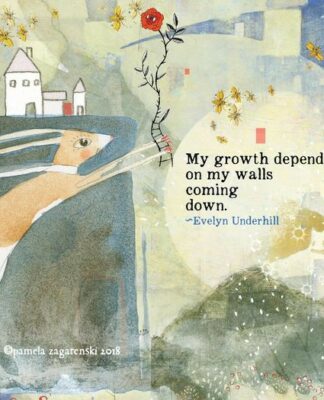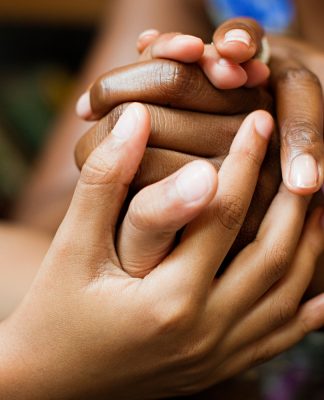Enter a marvel of complexity — the human brain. The brain is hard-wired for attachment, an evolutionary adaptation that stems from the reality that safety and survival is typically more likely while in a band rather than solo. Attachment trauma refers to the rupture or threats of rupture to an emotional bond with an important other (attachment trauma and relational trauma will be used interchangeably). For a child to be alone without at least one caretaker spells death- a child would be helpless to survive and fend for him or herself without care early in life. Thus, attachment is central to human development. What happens when the early attachment(s) rupture or fail to fully form or become secure? What are the consequences and how can this type of trauma be treated?
How it should be
The human infant needs at least one caregiver who responds to their needs on a somewhat consistent, emotionally attuned basis. Minor gaps between this kind of attunement prime the infant’s system to be able to tolerate disappointment and grief, making it better prepared to deal with life’s challenges. Allan Abbas (2015), in Reaching through resistance: Advanced psychotherapy techniques, describes the ideal situation in this way:
Imagine a mother and baby, face to face; the baby is having “whole body smiles” in response to a warm and equally responsive mother. You feel good seeing this. Why? Something good is happening: attachment, with all the biological and psychological benefits that result. A child who grows up with this uninterrupted parental bond will be able to relate to others without undue fear, anxiety, or defensiveness” (Abbas, 2015, p. 7).
Allan N. Schore (2001), in The effects of early relational trauma on right brain development, affect regulation, and infant mental health, sheds further light on ideal development: “the infant’s expanding capacity for self-regulation, the ability to flexibly regulate stressful emotional states through interactions with other humans — interactive regulation in interconnected contexts, and without other humans — autoregulation in autonomous contexts.” Schore goes on to assert that this ability to go back and forth between these “dual regulatory modes” in response to the environment is an “indicator of normal social-emotional development,” and that through this process the secure attachment “facilitates right brain development, promotes efficient affect regulation, and fosters adaptive infant mental health” (Schore, 2001, p. 204). Unfortunately, most of our caretakers are not able to provide this kind of consistent attunement and thus secure attachment. The result is attachment trauma.
Consequences of relational ruptures
When an emotional bond with an important other is threatened or actually ruptured, emotional pain results. Abbas (2015) describes how when the bond between child and caregiver is ruptured due to misattunement, neglect/abandonment, or abuse, the result is, “Attachment trauma [which] causes painful feelings.” Abbas goes on to elucidate the fallout of this type of trauma: “If a child is unable to process these feelings with a loved one, he will avoid his feelings and the relationships that trigger them” (Abbas, 2015, p. 7). Abbas continues to describe the consequence of relational rupture by asserting that a complex set of feelings are triggered by attachment trauma, including rage, guilt about the rage, pain, as well as loving and tender feelings at the core of the attachment. Sealing all of these feelings off in an outer psychic layer of defense against emotional closeness with others. Abbas refers to this layer of avoidance thusly, “Now he fears to be close to his feelings or to the people that trigger them,” and, “A child who shuts down his complex feelings can grow into an adolescent who experiences interpersonal avoidance, self-destructiveness, physical illness, depression, anxiety, or anorexia” (Abbas, 2015, p. 7). Relational trauma leads to a shutting down of feelings, creating anxiety and interpersonal distance.
Robert J. Neborsky echoes Abbas’ point of view, though stresses that it is when the attachment ruptures are not repaired that the most severe consequences occur. In his chapter titled Treatment of trauma using an affect-experiencing – attachment theory approach (2003), he writes, just like Abbas, that in reaction to the pain of the trauma, reactive anger follows, which in turn generates guilt about wanting to hurt someone the child also loves – the caretaker. In order to manage the anxiety around this anger and guilt, the child employs defenses that interfere with intimacy and therefore creating close relationships and attachments, which compounds the effects of already insecure attachments (Neborsky, 2003, p. 291). Both authors point to the intrapsychic and interpersonal effects of attachment trauma, describing a cascade of painful and frightening feelings that need to be defended against, and are ultimately topped off by an outer psychic shield, or wall, that keeps other people at arm’s length. This chain of intrapsychic events – the pain of the trauma, reactive anger, guilt, grief, love, and distance mechanisms to keep others at away — result in a sense of isolation, disconnection, and of being alone in the world.
Laurie Anne Pearlman and Christine A. Courtois (2005), in an article titled Clinical applications of the attachment framework: Relational treatment of complex trauma, also highlight the alienating effects of relational trauma. The authors state that victims have difficulties both developing and maintaining relationships. Other symptoms include a need to avoid the people who trigger trauma-laden memories, irritability and angry outbursts, as well as, “feelings of detachment or estrangement from others, a restricted range of affect (e.g., unable to have loving feelings), a sense of fore- shortened future (e.g., does not expect to have a career, marriage, children, or a normal lifespan).” The authors go on to state that these problems make it “difficult for others to relate to them [the victims],” which in turn increases the victim’s social alienation, compounding the pain of the original trauma (Pearlman & Courtois, 2005, p. 449).
Other authors highlight similar consequences of attachment trauma, but from slightly different angles. Marylene Cloitre et. al., in Treating survivors of childhood abuse: Psychotherapy for the Interrupted life, under a section titled “Loss of Healthy Attachment,” enumerates her own take on the consequences of ruptures in relational attachment, mentioning, “a profound loss of security and a sense of personal safety… a restricted capacity for curiosity and exploration about the world… there is also the loss of a healthy trajectory of affective organization” (Cloitre, Cohen, & Koenen, 2006, p. 6). Marion F. Solomon (2003), in a chapter titled, Effects of attachment trauma on intimate relationships, puts it this way: “If the early childhood trauma was significant, then the individual will frequently invoke defenses to alleviate the relationship difficulty, and then the normative growth of intimacy, empathy, understanding, healthy dependency, and connection that occurs over time will not unfold (Solomon, 2003, p. 325). These ideas illustrate the compounding effects of trauma – the pain of the original traumatic experience and the repeated trauma around being isolated, a result of the defenses employed to manage the pain and anxiety around the initial traumatic experience and the feelings mobilized as a result of the traumatic event.
Christine Courtois and Julian Ford (2012), in Treatment of complex trauma: A sequenced, relationship-based approach, write that, “Trauma can be compared to a toxic substance. It requires the mindful application of methods to limit and contain exposure and toxicity so that it does not cause additional damage” (Courtois & Ford, 2013, p. 271). How might this “toxic substance” be expelled, or drained? The aforementioned authors stress the importance of the treatment relationship, going so far as to say that for people with disorganized attachment styles, “the therapy relationship is the therapy” (Courtois & Ford, 2013, p. 293).
Treatment
The account of “Krystal,” though inspired by an actual client, the real name and all identifying information are obviously withheld, and several details are fictitious to further protect confidentiality and to avoid even the slightest recognition of identity
Enter “Krystal.”
The client is a 24-year-old homeless female diagnosed with bi-polar type 1 disorder. Krystal was adopted at an early age, experienced physical abuse, and in her early teens was transferred to another family. She bonded with the father in her new family, but he died a year later of medical complications. Krystal presents in visible distress, with psychomotor agitation (shaking legs, scribbling on paper), disorganized thought processes, mood disturbance (“depressed,” “anxious,” “agitated”), sleep disturbance, substance use problems (5 plus drinks per day), and homelessness. In addition, she reports that she has had recent “racing thoughts,” “lots of talking, socializing.” Krystal denies SI or self-injury and said she is medication compliant.
Safety, rapport, and containment were not easy to achieve with Krystal, but through hard work, we formed a trusting relationship and Krystal’s anxiety significantly diminished. I approached my work with Krystal from a set of principles developed and outlined by Habib Davanloo, M.D., (2000), called Intensive Short-Term Dynamic Psychotherapy (ISTDP). Briefly, the treatment followed these steps: Krystal’s anxiety was through the roof when she first entered treatment, and through exploration I determined that much of this anxiety was based on projection (projective anxiety), I first restructured the projections by enacting a healthy relationship that differed from her previous, unhealthy relationships while also engaging Krystal in reality testing. This brought her anxiety down to a manageable level. Second, I applied a little bit of pressure into her system (“can we look to how you felt towards so and so when that happened?”) so as to properly be able to psychodiagnose Krystal’s capacity to tolerate affect. Krystal employed a mixture of regressive as well as some higher order defenses, and her anxiety was channeled into her striated muscular system, as evidenced by sighs and clenched fists. I decided to use a slow, graded format of ISTDP, slowly desensitizing Krystal’s system to successively higher levels of anxiety and thereby slowly building capacity to tolerate affect.
Once she was sufficiently oriented towards the therapeutic task of facing her inner life and once her defenses had been sufficiently restructured, I began to focus more on affect. She was terrified of facing her feelings, especially her anger and rage, but eventually she managed to do so, accessing sadism and rage towards her boyfriend and ex-boyfriend, which dramatically reduced her anxiety furhrter. Love, guilt, and tender feelings followed, and as Krystal could begin to feel and put words to what she felt, her need for compulsive drinking and promiscuous behaviors went away. She began to prioritize self-care, and as the “toxic substance” of her repressed guilt over her sadistic impulses began to “drain,” i.e., be de-repressed, her entire presentation and countenance changed. Krystal remains a work in progress, but her symptoms decreased significantly and she gained greater insight into her inner workings and outer behaviors, and the connection between the two. Krystal gained insight into the underlying drivers of her self-punitive ways of living. I am sure there are many other ways of working with relational trauma, but the way I worked with Krystal appeared successful in making a real difference in Krystal’s life. I felt and still feel very privileged and honored to have worked with Krystal and been privy to the intimate life of her psyche in a way that alleviated some of her suffering.
Human beings are wired for attachment. When attachments are disrupted without repair (efforts by the caretaker(s) to acknowledge the rupture and help the child process the feelings around the disappointment), then relational trauma results. The psychological and interpersonal consequences of the trauma are numerous and very painful. Bottled up feelings fester and become “toxic,” making the victim’s experiences of hyper-arousal (intrusions), numbness (constricted affect), and avoidance-behaviors her “new normal.” This amounts to a tortured existence. Fortunately, psychotherapy techniques exist that can help drain the inner “toxicity” and allow victims to become survivors, to grieve losses, heartaches, and disappointments, and become freer, fuller, more vibrant individuals at the other end of the process.
References
Abbas, A. (2015). Reaching through resistance: Advanced psychotherapy techniques. Retrieved from USA. Publisher: Seven Leaves Press.
Cloitre, M., Cohen, L. R., & Koenen, K. C. (2006). Treating survivors of childhood abuse: Psychotherapy for the Interrupted life. Retrieved from New York
Cole, S. F., Greenwald, J., Gadd, G., Ristuccia, J., Wallace, L., & Gregory, M. (2005). Helping traumatized children learn (Massachusetts Advocates for Children Trauma and Learning Policy Initiative).
Courtois, C., & Ford, J. (2013). Treatment of complex trauma: A Sequenced, Relationship-Based Approach. New York: The Guilford Press.
Davanloo, H. (2000). Intensive short-term dynamic psychotherapy. West Sussex: John Wiley and Sons.
Neborsky, R. (2003). Treatment of trauma using an affect-experiencing — attachment theory approach. In M. F. Solomon, & D. J. Siegel (Eds.), Healing Trauma attachment, mind, body, and brain (2003-03-17). Healing Trauma: Attachment, Mind, Body and Brain (Norton (1 ed. (pp. 295-321). [Kindle ]. Retrieved from
O’Neill, L., Guenette, F., & Kitchenham, A. (2010). ‘Am I safe here and do you like me?’ Understanding complex trauma and attachment disruption in the classroom. British Journal of Special Education, 190-197.http://dx.doi.org/10.1111/j.
Pearlman, L. A., & Courtois, C. A. (2005). Clinical applications of the attachment framework: Relational treatment of complex trauma. Journal of Traumatic Stress, 18, 449-459. http://dx.doi.org/10.1002/jts.
Schore, A. N. (2001). The effects of early relational trauma on right brain development, affect regulation, and infant mental health. Infant mental health journal, 22, 201-269. Retrieved from
Schore, J. R., & Schore, A. N. (2008). Modern attachment theory: The role of affect regulation in development and treatment . Clinical Social Work Journal , 36, 9-20. http://dx.doi.org/10.1007/
Solomon, M. F. (2003). Effects of attachment trauma on intimate relationships. In Healing trauma: Attachment, mind, body and brain: Norton series on interpersonal neurobiology. Publisher: Norton and Company


 I have a passion for practicing ISTDP informed psychotherapy and I enjoy writing about it. For more information and what I do, visit my website: www.johanneskieding.com
I have a passion for practicing ISTDP informed psychotherapy and I enjoy writing about it. For more information and what I do, visit my website: www.johanneskieding.com


















